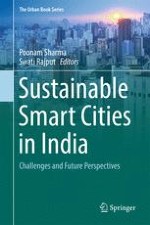2017 | OriginalPaper | Buchkapitel
25. An Evaluation of Disaster Vulnerability in the Shimla Himalaya, Himachal Pradesh
verfasst von : Roshani Devi
Erschienen in: Sustainable Smart Cities in India
Aktivieren Sie unsere intelligente Suche, um passende Fachinhalte oder Patente zu finden.
Wählen Sie Textabschnitte aus um mit Künstlicher Intelligenz passenden Patente zu finden. powered by
Markieren Sie Textabschnitte, um KI-gestützt weitere passende Inhalte zu finden. powered by
